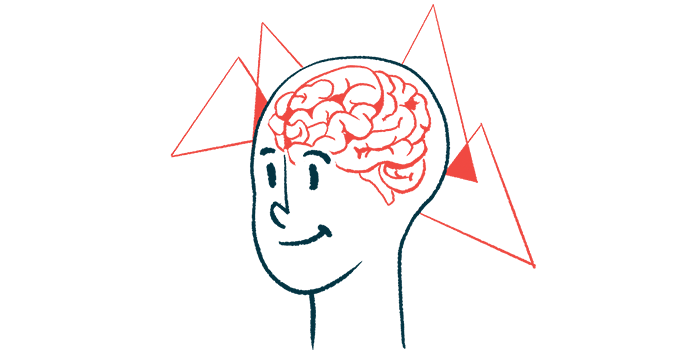1st ALS patient to get Neuralink brain implant finds new voice
Thought-powered device allows users to communicate via computer interface

Arizona-based Brad Smith has become the first person with amyotrophic lateral sclerosis (ALS) to receive a brain implant from Neuralink as part of an ongoing clinical trial.
The implant, which is designed to allow users to control a computer using only their thoughts, has granted Smith newfound independence and freedom. In a video posted to X, which Smith created and edited on his laptop using the device, he said his experience with the Neuralink system has overall been “fantastic.”
“Neuralink has given me freedom, hope, and faster communication. … It has improved my life so much. I’m so happy to be involved in something big that will help many people,” he said.
ALS is marked by the degeneration and death of motor neurons, the nerve cells responsible for controlling movement. As motor neurons become damaged and die, patients have increasing difficulty moving their muscles, which affects their ability to speak among other important functions.
Smith, who has late-stage ALS, has completely lost the ability to move his limbs or speak, becoming the first nonverbal person to get the implant.
Before Neuralink, he communicated with a device that tracked his eye movements. However, the eye-tracking device is sensitive to light variations and works best in dark rooms, so Smith wasn’t able to use the device outside or in indoor settings with bright lights.
“Before Neuralink I had to use an eye-gaze controlled computer for all communication. It is a miracle of technology, but it is frustrating,” he said. “I was basically Batman. I was stuck in a dark room.”
Freedom to communicate in different settings
Now Smith says the Neuralink device is allowing him to communicate in places where he couldn’t before. The father of three has used the device to attend one of his children’s soccer games and to give a talk to youth at his local church.
Notably, when Smith uses his thoughts to type on a keyboard and generate speech, the program uses his old voice, which was cloned using artificial intelligence from old recordings before he lost his speech.
“I was actually able to talk outside. I [am] actually thinking about traveling outside the [city] metro [for] the first time in 5 years,” Smith said in a blog post from Neuralink.
The Neuralink device works to detect impulses from the brain, which are processed by a computer and translated into actions. In Smith’s case, the device is implanted in part of the brain that normally controls movement. Although Smith can no longer move his body, he can think about moving, and brain activity patterns detected by the device can be used to control the mouse on his computer.
Getting the system in working order took some fine-tuning and trial and error. According to Smith, he initially tried to control the mouse by thinking about moving his arms and hands, but that wasn’t working well. Instead, he thinks about moving his tongue and jaw.
“Neuralink does not read my deepest thoughts or words I think about. It just reads how I want to move and moves the cursor where I want,” Smith said.
Smith customized the interface to make it easier to use, with features like shortcuts that he can click on to jump around quickly, as well as a “parking spot” where he can put the cursor when he doesn’t want it to move, such as when he’s sleeping or watching TV. The system also uses artificial intelligence to give him prompts that help him respond quickly in conversation.
“It is not perfect, but it keeps me in the conversation,” he said.
Smith noted that, as his brain’s activity changes over time, the movements of the cursor need to be continuously calibrated; he has a tool to help manage this. This type of calibration is only possible in human trials, he said, because animal tests can’t account for the user’s intentions.
“This tool lets me adjust how the cursor drifts. This is a great reason why Neuralink is doing human trials, because the monkeys cannot explain how the cursor drifts,” Smith said. “Monkeys just give up when [tasks get] difficult and want snacks. They are like my children in that way.”
Three people now successfully using Neuralink in trial
Smith received the Neuralink implant as part of a clinical trial called PRIME (NCT06429735), which is recruiting at sites in Arizona and Florida. Before him, Noland and Alex, two patients who lost the ability to move their arms and legs due a spinal cord injury, were also implanted with the wireless brain-computer interface. Together, the three participants have had the devices for more than 670 days and used it for more than 4,900 hours.
PRIME is expected to include about five participants with severe quadriplegia for at least one year due to spinal cord injury or ALS. A separate trial called CAN-PRIME (NCT06700304) is recruiting up to six patients at a site in Ontario.
In both studies, Neuralink’s device is surgically inserted into the patients’ brains using a specialized surgical tool, the R1 Robot, which ensures the tiny threads connecting to the device are precisely and safely placed. The main goal is to evaluate the safety of the brain implant device.
Neuralink, owned by Elon Musk, has a patient registry where those interested in joining clinical testing of the device can provide their information. The company is also connecting with people from the U.K. who may be interested in participating in future clinical studies.







